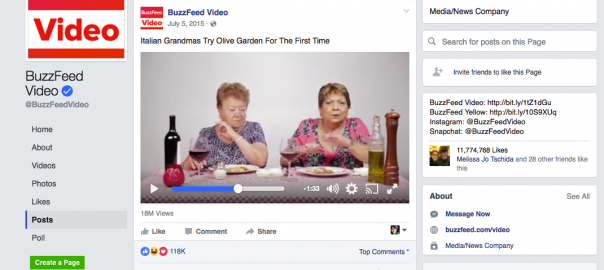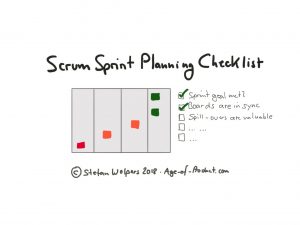When Facebook talks, marketers listen. It’s just too big to ignore, whether you agree with its constant changes or not. But in the case of video — Facebook’s news feed update is a nice step forward. Not only will it encourage longer videos and better storytelling, but it may help put an end to the one-size-fits-all, “keep ’em as short as possible” mentality we see so often in video marketing.
Keeping up with Facebook’s news feed updates can be maddening, but we also realize that just about all of its changes — like Google’s — are based on user experience. The better Facebook analyzes its users, the better it does. So, the new update that emphasizes engagement on longer videos is particularly heartening. I’ve been preaching the value of longer videos for a long time, so it’s particularly exciting to be joined by one of the biggest voices in marketing.
What you need to know about the Facebook news feed update.
Facebook is simply trying to figure out the right metrics to measure video and give people the best content. With so many people making fun of the huge number of views attributed to silent autoplays, the goal is to get more meaningful video in front of viewers, so they will actually click and watch what’s in front of them — creating meaningful views and more meaningful numbers.

On January 26, Facebook announced that it will change the way it ranks videos, adjusting the value it gives to how much of a video is watched. Specifically, it will rank “percent completion” differently for longer videos:
“If you watch most or all of a video, that tells us that you found the video to be compelling — and we know that completing a longer video is a bigger commitment than completing a shorter one. As we continue to understand how our community consumes video, we’ve realized that we should therefore weight percent completion more heavily the longer a video is, to avoid penalizing longer videos.”
In other words, Facebook wants to give users more of what they really like. “Longer videos that people spend time watching may see a slight increase in distribution on Facebook,” the announcement said, “so people who find longer videos engaging may be able to discover more of them in News Feed.” As a side effect, Facebook noted that some shorter videos may see a slight dip in distribution as they roll out the change over the next few weeks.
Note, Facebook isn’t talking about all longer videos. Just the good ones. Facebook, fortunately, realizes that all stories aren’t one-size-fits-all. Good video will be rewarded. And good longer videos won’t be shortchanged.
What that means for your Facebook videos.
I’ve always been frustrated by how many people understand that video is the best way to tell many stories, yet still held those videos to arbitrary limits. Whether they focused on data about videos under 30 seconds or longer than 2 minutes, they never seemed to understand that the story should guide the timing.

At StoryTeller, our position has always been that the video should keep going as long as you can keep it interesting — not a second more, but not a second less. And now we have a powerful ally. In fact, part of the announcement sounds like I wrote it myself:
“Pages should focus on creating videos that are relevant and engaging to their audiences. Longer videos that people don’t want to watch will not perform better in News Feed. The best length for a video is whatever length is required to tell a compelling story that engages people, which is likely to vary depending on the story you’re telling.”
That’s the key — quality counts. The best videos will be rewarded, but the boring ones won’t.
Why this is good for all videos.
I’m glad marketers pay attention to Facebook’s changes. I’m glad we now have a powerful voice giving people permission to make longer videos — as long as they are good.
If nothing else, that means we’ll start seeing better videos online, but I’m also hoping for a trickle-down effect. Since people often repurpose the same videos on various platforms, I’m expecting to see the longer videos on those platforms, expecting to see better performance by the good ones, and expecting to see more and more high-quality videos as more and more people get the message.
Like any other kind of content, video should be measured on its merits, not some arbitrary, cookie-cutter statistics. And thanks to Facebook, it looks like that’s finally about to happen.
Digital & Social Articles on Business 2 Community
(90)
Report Post









